A poor man's recipe
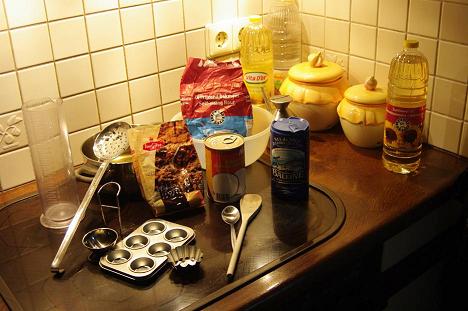
The Lot
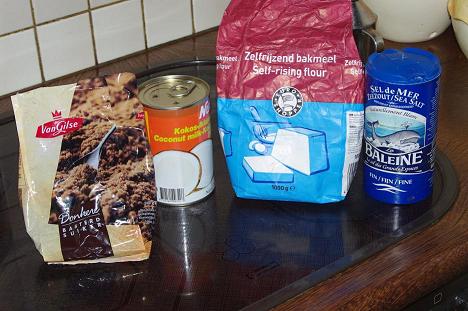
A close up of the ingredients
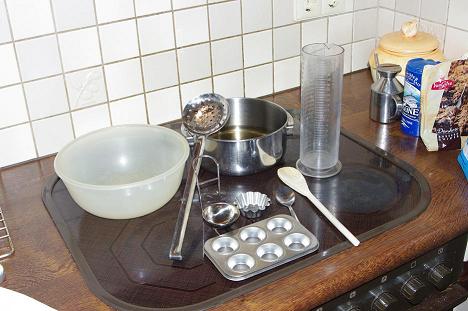
A close up of the tools
Notes on ingredient selection:
Basically, any sort of rice flour will do. But, red rice is preferred because of its traditional image, and being healthy (!!), and more than that, being of darker colour, the colour adds to the required dark brown nature of the finished product.
The idea of self-rising wheat flour is to make the athirasas bloat and acquire that traditional shape during frying. The batter is left for an hour also to help achieve that objective. Yes, I cannot see why you cannot use a pinch of yeast and patent wheat flour instead.
Normally, back in Sri Lanka, use of sugar is frowned upon. So, the preferred ingredient is kithul treacle or kithul jaggery. When one lives abroad, these are luxury items, not all of us can afford or have access to. If you are able to get treacle, I would suggest you start with 100ml., or even 150ml. With jaggery I suggest similar amounts. The thing to remember is, treacle and jaggery have a much less sweetness value than sugar.
I would welcome the experiences of readers who had tried athirasa using treacle and jaggery.
I use coconut milk from tins, and not made up milk using coconut milk powder. Milk extracted from fresh coconuts is the norm, but…
Method:
Add sugar, rice flour, wheat flour and salt to the bowl and mix well with the wooden spoon.
Add coconut milk and mix well.
Then add, little by little, about 125ml of water. Break up lumps that might appear. Mix thoroughly to avoid lumps, until the mixture is of uniform consistency.
Leave the mixture alone for about an hour.
Add the remaining water and continue to maintain a uniform smooth consistency.
The mixture is now ready.
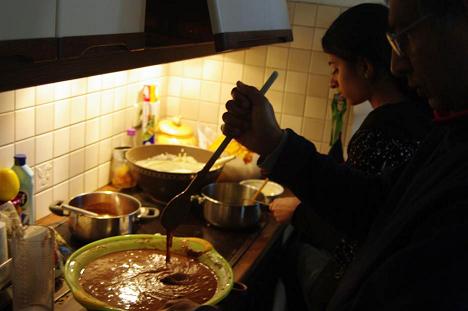
Batter is ready:
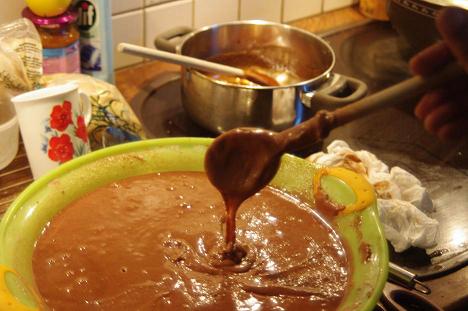
A close up view of batter
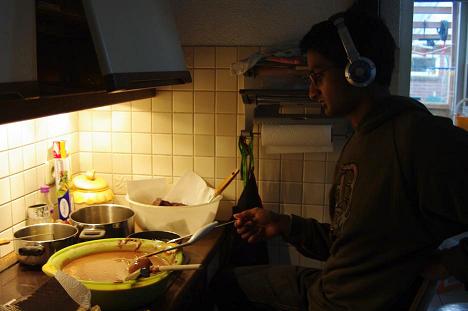
The setting in the kitchen
Pour oil into a pan, maintain a depth of about 2-3cm. This depends on the size of athirasas you want to make. If you plan to use moulds, make sure the moulds are well covered by oil.
Heat the oil in the pan.
When it is hot enough, assuming you use moulds, place the moulds in the hot oil for them to reach the temperatures of the oil. Then take them out, drain the oil and pour the batter into them and return them to the pan.
Keep bathing the moulds with hot oil with a spoon.
Watch out for hot sputtering oil!
Sometimes, athirasas leave the moulds without protest. Most times you have to prod them out. For this, I use a chopstick flattened at the narrow end as a lever. You have to be careful with the use of force as boiling oil is always ready to jump out and attack you.
Once ready, i.e. reaches the dark brown colour, and a sample tastes fine, they can be unloaded on to kitchen paper.
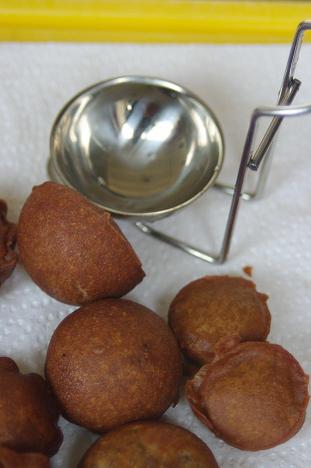
A mould I used
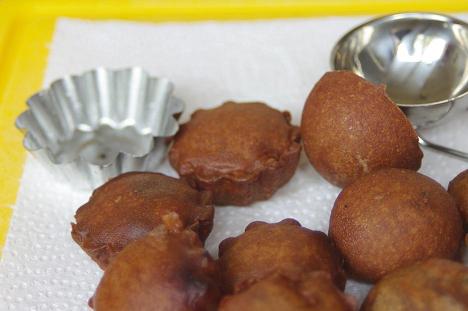
Another mould I used
If you are not using moulds, as I did in the first instance, you pour the batter directly into oil with a ladle. To get athirasas of consistent size and shape requires patience and a bit skill and practice. But, it is worth. They have an added commercial value: they are hand crafted!
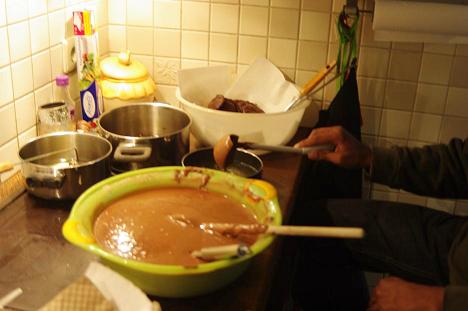
Straight into the pan
It is a lonely life as an athirasa maker:
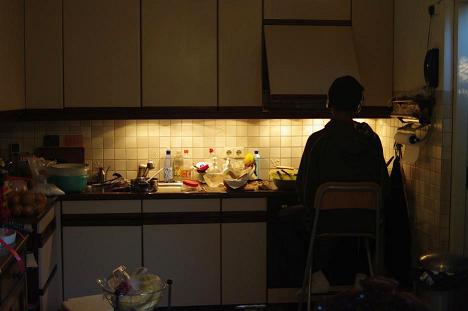
Harin alone in kitchen
Athirasas tend to get mouldy if left exposed to air too long. The best place to store them is the fridge. If you have made a big stock, then consider freezing them. They come out just fine when thawed even months later.